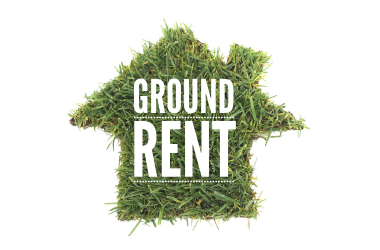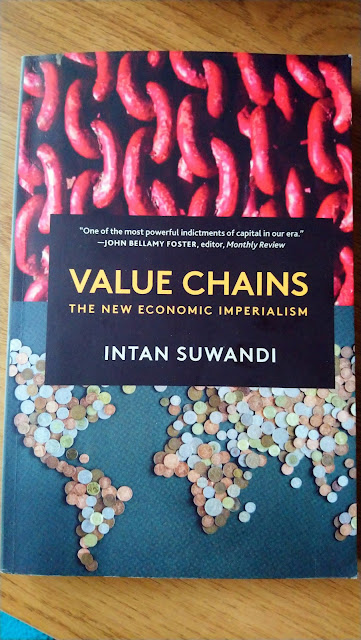A note on Debarshi Das’ A Model of the Marxist Rent Theory
Michael Roberts published an entry on the latest 50th anniversary conference of the Union of Radical Political Economy (URPE), where he mentions the Harvey-Smith debate on imperialism. He publishes two papers on Marx’s theory of ground rent, and one of the texts (by Debarshi Das) claims that there’s no capitalist mode of production in most of the Third World, including India. The paper makes the argument that agriculture is not capitalistic in India, but instead, based on family-work, no wages, and petty farms.
But this completely forgets Lenin’s The development of capitalism in Russia, the best work on capitalist penetration on agriculture, or at least the most basic one. Lenin characterizes as industrial agriculture both leasing/tenancy and sharecropping, not only in the big landed properties, but also in the small ones, and not only where there’s individual property but also communal and extended-family relationships of work. This is all capitalist penetration: not only the leasing/tenancy pays in money, or the sharecropper receives money in exchange for produce, but small farmers sell their produce to big merchants, while at the same time, not going beyond mere subsistence agriculture (which is going to be taken by Chayanov later on the century), precisely on the exploited character of the small land owner and farmer who, even if it owns land and works on it with his family (whether it’s the nuclear or the extended family), the income he receives doesn’t go beyond their basic needs. It’s a monetary income, and the farmer (or the family-unit, in Chayanov’s terms) is an owner, but it doesn’t constitute a profit that goes beyond subsistence levels.
We have to remember what David Harvey points out in Capital Vol II, and the existence of chapter XX of Vol III on the second non-revolutionary way of capitalist penetration, which is related to the theory of the small plot-system of the same Vol III, right after rent theory. Harvey points out quotes from Marx where capitalism can penetrate small peasant societies, and even hunter gatherer societies, just as long as their products enter the circulation of ‘industrial’ capital ('industrial' which, in Vol II, means the whole capitalist economy, not only industrial capital in the classical sense). And chapter XX of Vol III also gives way for a capitalist penetration that is not based on the big landed properties of England and primitive accumulation, but on the takeover ‘from above’ of capitalist penetration by commercial capital (something which is being elaborated more fully by Jairus Banaji as we speak). Anyways, the exchange of produce for money (whether through leasing/tenancy, sharecropping or the selling of excedents), and the entering of those commodities in a commercial circulation, plus the fact that any income derived from this does not imply a profit, but capitalist industrial exploitation (in the words of Lenin), all seem to imply the opposite of what the paper affirms.
In the case of India and the Third World in general (here, here and here), we find a fragmented agricultural land, but which presents all of the above characteristics (exchange for money, commercialization of excedents, etc), whether in latifundia or small plots, and whether produced through extended family labour and customary practices and law (as in Africa or Asia or the indigenous population of Latin America) or small peasants as in Chayanov’s sense (inherited from Lenin, as we already pointed out), and all of this for the accumulation of a commercial margin which in Asia, Africa or Latin Amerca is way bigger because of land fragmentation and small plots, precisely (the ratio of minifundia-latifundia is way different than in the classical examples of Europe or United States, etc -with the exception of South America, where the extension of big farms is similar to that of Europe-), and this commercial margin is a profit based on capitalistic exploitation.
Now, this involves also the discussion on formal and real subsumption. Most customary and extended-family tribal and traditional relationships in the towns don’t allow us to speak of a properly defined property (specially in Africa and Asia), but this is precisely what makes ambiguous any rejection of capitalist penetration in agriculture in the Third World: the advancements of means of productions, credit or produce on behalf of merchants and directed to agricultural producers and workers, is exactly the same as the one described in chapter XX on the non-revolutionary way of capitalist penetration. This creates intermediate levels between formal and real subsumption: its not directly property, but at the same time, merchants and landowners (and in the case of Africa and Asia, they often are the same person) modify the productive process just like in real subsumption. This complements Marx’s ambiguity on the capitalistic character of formal subsumption, and the small plot-system and chapter XX digressions of volume III, which at the same time must be compared to the simple mercantile mode of production and rent theory in general (e.g.: the passage from rent in labour in a pre-capitalistic situation to sharecropping in a capitalist situation, like the one Lenin accepts).
This only shows there’s a significant drawback in Marxist analysis of agriculture, and capitalist penetration in the Third World (and hence: the world market). We invite the readers to follow the links we already provided above inside the body text, where they will find the work we’ve done following this insights. This affirmations are made even when Third World countries are industrialized countries, independently of the character of their agriculture, and when agriculture itself is dominated by capitalistic commercial relationships like the ones Lenin established more than a century ago.


